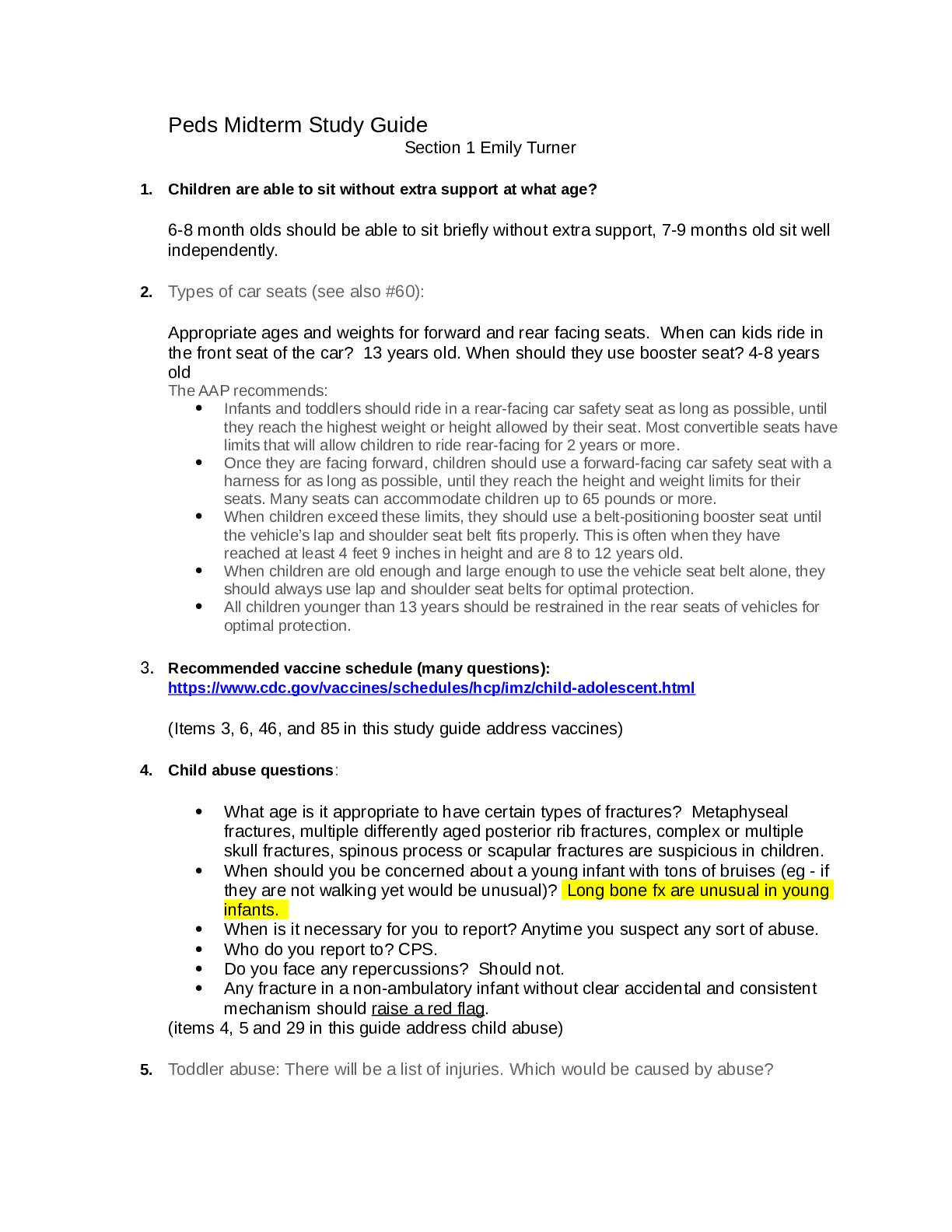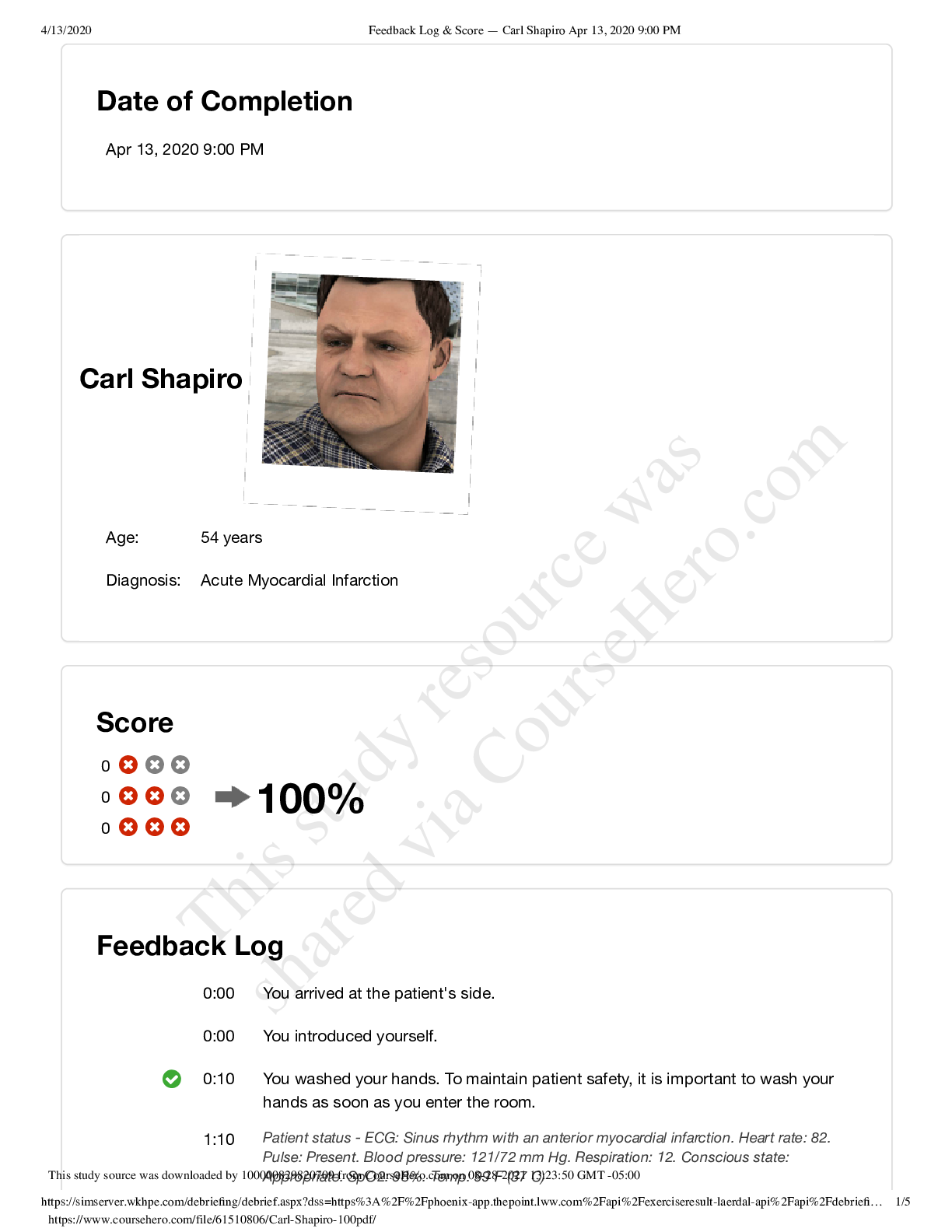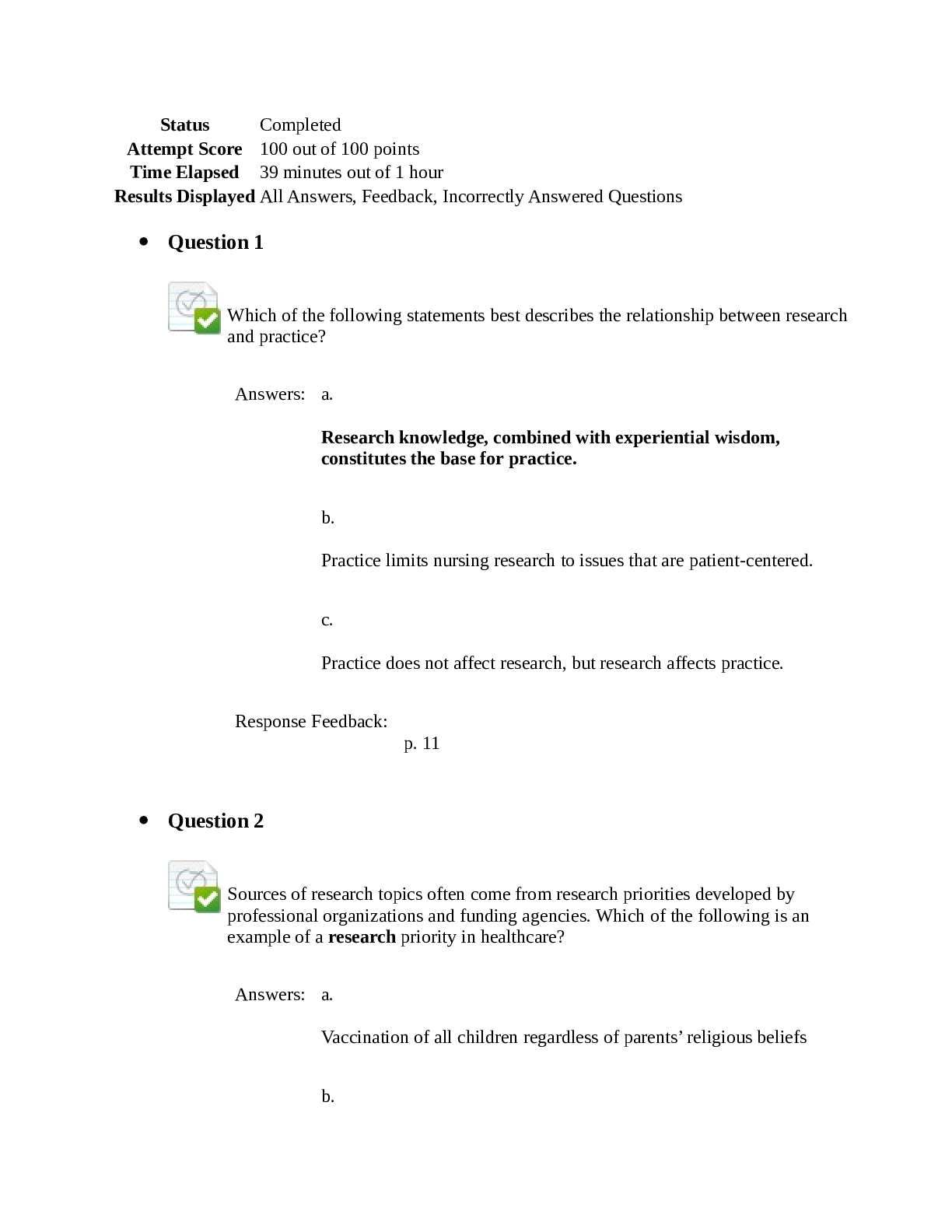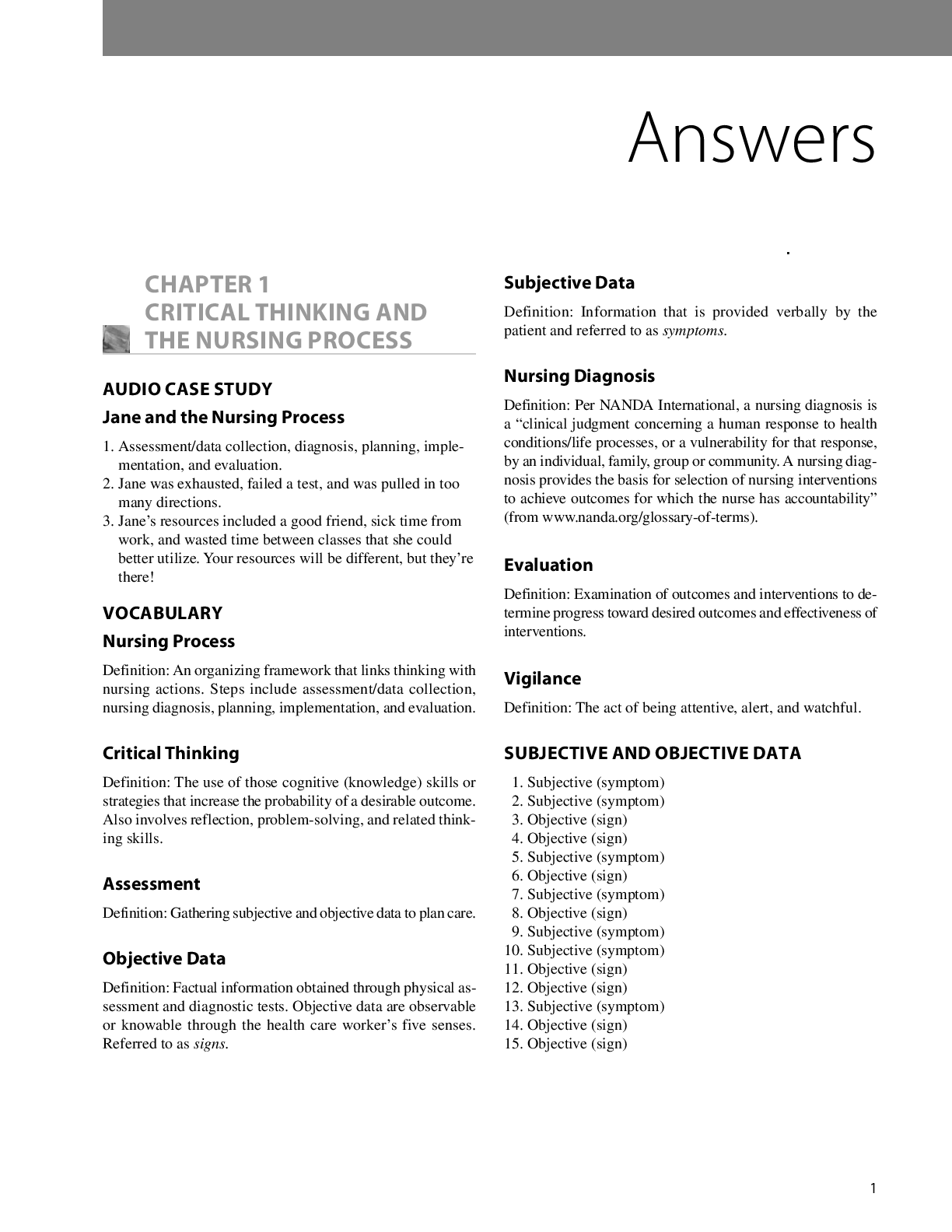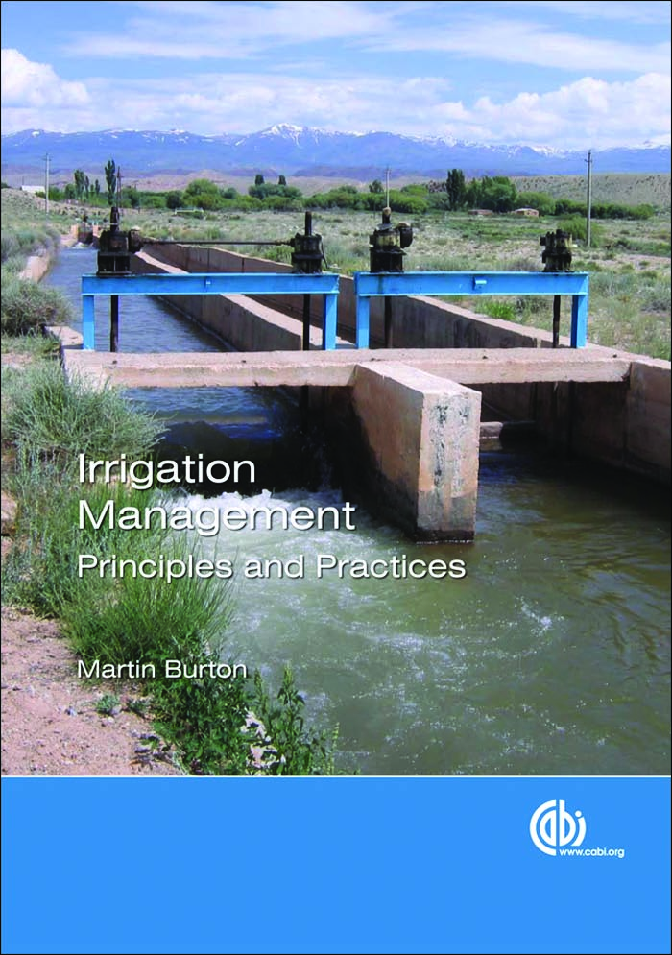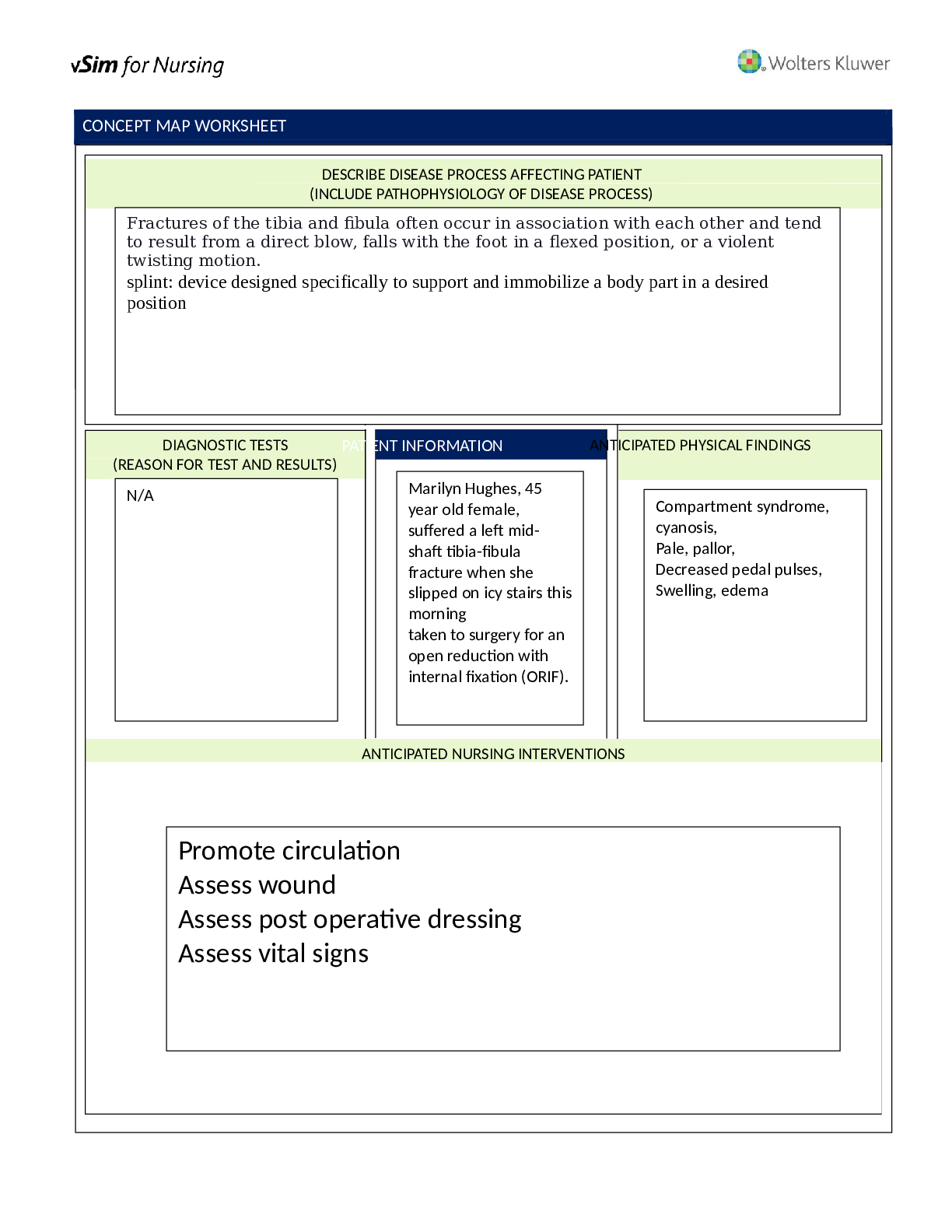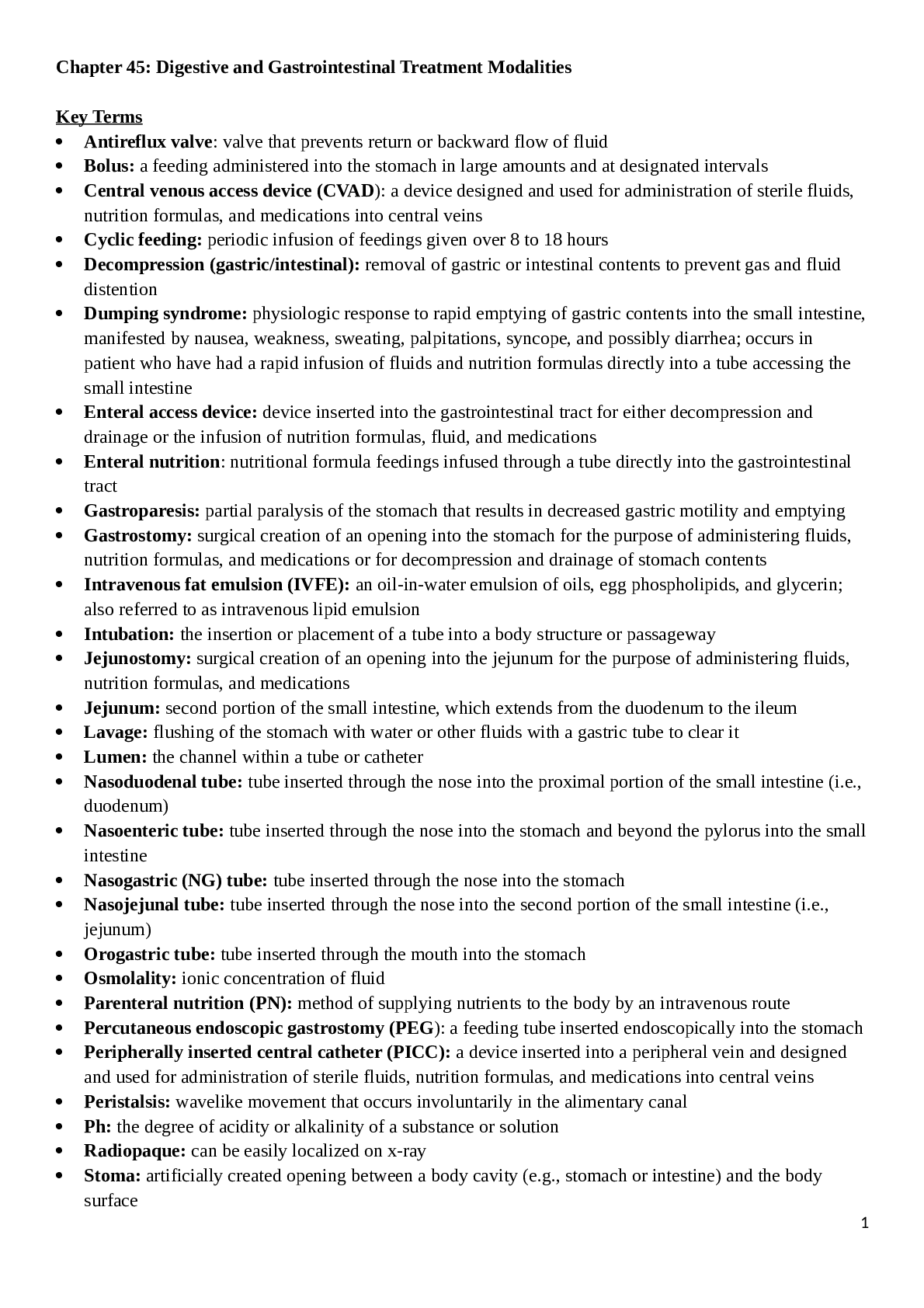History > STUDY GUIDE > HIST 101Unit 5 Answers (2018-2019) AP U.S. GOVERNMENT AND POLITICS Political Participation – Revie (All)
HIST 101Unit 5 Answers (2018-2019) AP U.S. GOVERNMENT AND POLITICS Political Participation – Review Packet
Document Content and Description Below
AP U.S. GOVERNMENT AND POLITICS Unit 5- Political Participation – Review Packet Governing is achieved directly through citizen participation and indirectly through institutions (e.g., political pa r... ties, interest groups, and mass media) that inform, organize, and mobilize support to influence government and politics, resulting in many venues for citizen influence on policy making. The principle of self-government is dependent on both citizen participation and the operation of the various linkage institutions that help citizens connect with the government. These institutions help people become a part of the policymaking process. Playing an important role in this process, the media report public opinion data and can sometimes influence the formation of that opinion as well. The accuracy of public opinion data is dependent upon the scientific polling methods that are used, and the results of these opinion polls are often used as a means of political influence. The role the media play in this process is at times criticized for the bias demonstrated in the format, context, and content of information distributed as well as the manner in which that bias impacts public understanding of political information. Social media poses both opportunities and challenges for democratic participation. Social movements, political parties, and interest groups also serve to connect the electorate with the government by influencing the manner in which people relate to and participate in its composition, functions, and policy-making agenda. Various social movements develop in response to conditions perceived as negatively impacting specific groups of people; their political strategies are aimed at changing public policy in a way that benefits the adversely impacted group. Political parties run campaigns in an attempt to win office and make policy consistent with their platform and goals. Over time political parties respond to election results, campaign laws, and changes in the way information is disseminated to the public. Even though political parties are designed to connect the people with government, there are various barriers that interfere with this connection, even to the extent of preventing candidates who represent interests outside the two major parties from being elected. Finally, interest groups exist as a form of political participation for people with particular policy concerns. While these groups exist for different causes, they are sometimes criticized for wielding a disproportionate impact on the policy-making process based on their organized pressure tactics and allocation of money for campaigns and lobbying. Like political parties and interest groups, elections connect citizens with government. The number of eligible voters has expanded over time based on various constitutional provisions, court rulings on voter access and campaign finance, and legislation. The Fifteenth, Nineteenth, Twenty-Fourth, and Twenty-Sixth Amendments, each a response to a specific social/political concern, serve to eliminate political discrimination against people due to a citizen’s race, sex, age, and ability to pay a poll tax. Voter turnout is impacted by the various provisions that states implement regarding voter requirements and qualifications that involve issues not addressed in those amendments. Voter turnout varies widely from election to election, and political candidates have taken advantage of technology and campaign finance laws to communicate their platforms more effectively to the voting public. The data regarding voter turnout in the United States provides a foundation for interesting analysis when compared to voter turnout in other democracies, and political scientists periodically study why voter turnout in the U.S. falls below that in other similar republics. Essential Questions: ● How have changes in technology influenced political communication and behavior? ● Why do levels of participation and influence in politics vary? ● How effective are the various methods of political participation in shaping public policies? [Show More]
Last updated: 1 year ago
Preview 1 out of 13 pages
Instant download

Buy this document to get the full access instantly
Instant Download Access after purchase
Add to cartInstant download
Reviews( 0 )
Document information
Connected school, study & course
About the document
Uploaded On
Jul 23, 2021
Number of pages
13
Written in
Additional information
This document has been written for:
Uploaded
Jul 23, 2021
Downloads
0
Views
89



